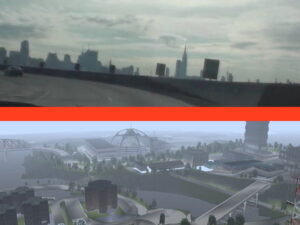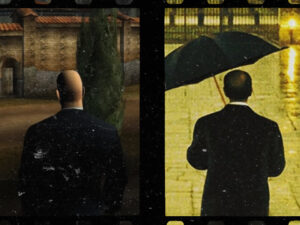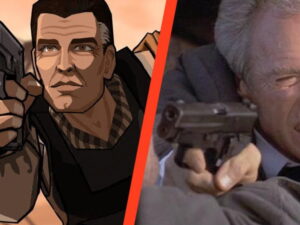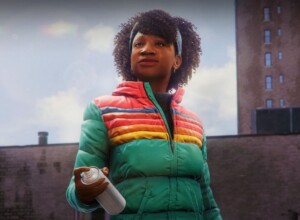Cut Scenes is Josh Wise’s regular column on the intersection between films and video games. This week, it’s Fallout: New Vegas vs. Blade Runner 2049.
The Fallout series has a way of carbonising American cities: charring their surfaces, peeling them and exfoliating layers of culture and history. None more potent than New Vegas: America’s erstwhile plutocratic playground, abraded by radioactive sandstorms, and called upon to restore the frivolity and vice that signals decadent civilisation. As Mr. House had it, “New Vegas is more than a city – it’s the remedy to mankind’s derailment.”
Blade Runner 2049 presents us with a product of mankind’s derailment. The remnants of downtown, of Fremont street and Binion’s and ‘Old Vegas’ – still visible in Fallout’s Freeside slum – have been wiped away. There are glimpses of the copies of the pyramids and the Eiffel Tower, dominated by Obelisks and gargantuan black edifices that menace the eye, whose sightline is anchored to the mega-freeway running from the foreground to vanishing point. A dirty bomb left the city irradiated and deserted, the entire cityscape smeared in a tangerine smog.

The Los Angeles of 2019 that we were shown in Blade Runner told a similar story: the fug of pollution rising from every flue collected in the sky, as if the city had a ceiling. It felt claustrophobic despite its massive size, a corrosive civilisation overgrown, digesting parts of its own history. As K travels to Vegas to track down Deckard, he uncovers traces of passage; these hint at the kind of life Deckard is living, one of survival and self-sufficiency.
The empty bottles strewn about the place call to mind Fallout’s bottle cap currency, and the image of Deckard one man and his dog, Bo, against the decaying backdrop, suggest Fallout’s classic wanderer:

Fallout’s New Vegas survived the planet-scorching nuclear weapons of the series’ Great War. It’s seclusion and isolation – surrounded on all sides by the Mojave Desert – left the city relatively unscathed. As you can see in the intro to New Vegas, the strip is an incandescing jewel against an empty black sky. It reflects the archetypal vision of Vegas, the Glitter Gulch, a phosphorescent mirage devoted to every human desire.
There are remnants of the Old Vegas, of Sinatra’s sandbox, in the interiors of Blade Runner 2049. His first confrontation with Deckard takes him through a lounge that strobes with Vegas’s imperator, Elvis Presley:

As K finishes his drink at Deckard’s bar, he pauses to play the jukebox – a skeuomorphic retro-future contraption with a glass bubble chamber. Captured in the glass is The Voice, a hologram of Frank Sinatra staring out and gesturing, seemingly at K:
It’s like a genetic memory stored in electrical signals, a flickering recollection rendered without colour like a dream in a decaying brain. In Fallout’s imagined future, Vegas is an unravished vision of the past, broken tarmac and dust doing little to dull the city’s iconic shine. It’s a vision of hope. Blade Runner 2049 permits these ephemeral glimpses of identity from within an unrecognisable alien landscape. It’s a city with no future, leaving us grasping for traces of its past.
More Cut Scenes:
- Cut Scenes: BioShock vs. Tim Burton’s Batman
- Cut Scenes: Metal Gear Solid 2 vs. The Terminator
- Cut Scenes: Grand Theft Auto III vs. The Sopranos












